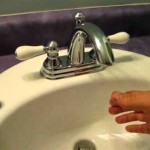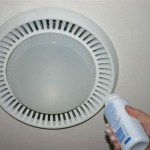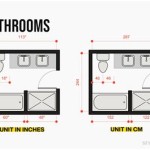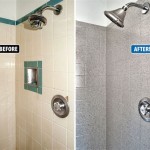Rustic Cabin Bathroom Vanity: Bringing Nature Indoors
The rustic cabin bathroom vanity represents a design aesthetic that blends functionality with the raw, unrefined beauty of the natural world. Characterized by its use of natural materials, earthy tones, and handcrafted details, this style of vanity transforms a utilitarian space into a warm and inviting retreat. Its appeal lies in its ability to evoke a sense of tranquility and connection to the outdoors, offering a welcome contrast to the often-sterile ambiance of modern bathrooms.
The incorporation of a rustic cabin bathroom vanity into a home's design scheme is more than just a decorative choice; it's a statement about the homeowner's appreciation for authenticity and a desire to create a space that feels both comfortable and timeless. This style is not limited to actual cabins or rural residences; it can be successfully integrated into various home styles, adding a touch of rustic charm to urban and suburban dwellings alike.
Key Elements of Rustic Cabin Bathroom Vanities
Several key elements contribute to the distinct character of rustic cabin bathroom vanities. These include the choice of materials, the design aesthetic, and the incorporation of specific hardware and accessories. Understanding these elements is crucial for selecting or creating a vanity that accurately reflects the desired rustic cabin aesthetic.
Material Selection: The cornerstone of any rustic cabin bathroom vanity is the selection of natural materials. Wood, particularly reclaimed wood such as barn wood, distressed pine, or cedar, is the most common and defining element. These woods often exhibit unique textures, grain patterns, and imperfections that add to the vanity's character. The use of stone, such as granite or river rock, for countertops or accent pieces further enhances the natural appeal. Metal accents, particularly those with a weathered or blackened finish, complement the wood and stone elements, providing visual contrast and reinforcing the rustic aesthetic. The choice of materials impacts not only the aesthetic but also the durability and longevity of the vanity. Solid wood construction, while more expensive, offers superior durability and resistance to moisture damage, making it a worthwhile investment for a bathroom environment.
Design Aesthetic: The design of a rustic cabin bathroom vanity often emphasizes simplicity and functionality. Clean lines and straightforward construction are common characteristics. However, this simplicity does not preclude the inclusion of handcrafted details. Hand-carved accents, exposed joinery, and live-edge wood can add a unique and artisanal touch. Open shelving is another common design element, allowing for the display of towels, toiletries, and decorative items. This design choice reinforces the relaxed and informal atmosphere associated with cabin living. In contrast to the sleek and minimalist designs of modern vanities, rustic cabin vanities often embrace a more organic and irregular form, reflecting the natural variations found in the materials used. The aim is to create a piece that feels both functional and visually appealing, seamlessly blending into the overall bathroom design.
Hardware and Accessories: The choice of hardware and accessories plays a crucial role in completing the rustic cabin bathroom vanity's look. Metal pulls and knobs, preferably in finishes such as oil-rubbed bronze, wrought iron, or antique copper, are frequently used. These finishes complement the natural wood tones and add a touch of vintage charm. Faucets with a similar finish are equally important, ensuring a cohesive design aesthetic. Beyond hardware, the choice of sink basin also contributes to the overall look. Vessel sinks, particularly those made of stone or copper, can be a striking addition. Lighting fixtures, such as sconces with Edison bulbs or rustic-inspired pendant lights, can further enhance the ambiance. Finally, the addition of decorative items, such as woven baskets, antique mirrors, and natural-fiber rugs, can complete the transformation of the bathroom into a rustic cabin retreat.
Considerations When Choosing a Rustic Cabin Bathroom Vanity
Selecting the right rustic cabin bathroom vanity requires careful consideration of several factors, including the bathroom's dimensions, the existing décor, and the homeowner's personal preferences. Overlooking these considerations can result in a vanity that feels out of place or fails to meet the functional needs of the space.
Space and Dimensions: Before selecting a vanity, it is essential to accurately measure the available space in the bathroom. This includes the width, depth, and height of the area where the vanity will be installed. Consider the placement of plumbing fixtures, such as water lines and drainpipes, to ensure that the vanity will fit properly without requiring extensive modifications. In smaller bathrooms, a wall-mounted or corner vanity may be a more suitable option than a freestanding model. In larger bathrooms, a double vanity or a vanity with ample storage space may be preferred. The scale of the vanity should be proportionate to the size of the bathroom to avoid overwhelming the space or creating a cramped and uncomfortable environment.
Existing Décor and Style: The rustic cabin bathroom vanity should complement the existing décor and style of the bathroom. Consider the color palette, the materials used in other fixtures and furnishings, and the overall design aesthetic. If the bathroom already features rustic elements, such as wood paneling or exposed beams, a vanity made from reclaimed wood or distressed materials will likely be a harmonious addition. If the bathroom has a more contemporary style, a rustic vanity can still be incorporated, but it may be necessary to choose a design that blends rustic elements with modern features. For example, a vanity with clean lines and a simple design, but made from reclaimed wood, can create a balanced and visually appealing contrast. The goal is to create a cohesive and unified look that reflects the homeowner's personal style.
Storage Needs and Functionality: The primary function of a bathroom vanity is to provide storage space and a convenient surface for grooming activities. Consider the storage needs of the household and choose a vanity that offers sufficient space for toiletries, towels, and other bathroom essentials. Drawers, shelves, and cabinets should be strategically placed to maximize storage efficiency and accessibility. The height of the vanity should also be considered, as an improperly sized vanity can lead to discomfort and inconvenience. Standard vanity heights range from 30 to 36 inches, but taller individuals may prefer a vanity with a custom height. The layout of the sink basin and countertop should also be carefully considered to ensure that the vanity is both functional and aesthetically pleasing.
Maintaining and Caring for a Rustic Cabin Bathroom Vanity
Proper maintenance and care are essential for preserving the beauty and longevity of a rustic cabin bathroom vanity. Natural materials, such as wood and stone, require specific care to prevent damage from moisture, stains, and other environmental factors. Neglecting these maintenance needs can lead to premature wear and tear, diminishing the vanity's aesthetic appeal and potentially shortening its lifespan.
Protecting Wood Surfaces: Wood surfaces, particularly those made from reclaimed wood or distressed materials, are susceptible to moisture damage. To protect the wood, it is essential to apply a sealant or finish that is specifically designed for bathroom environments. This sealant will create a barrier that prevents water from penetrating the wood, minimizing the risk of warping, cracking, or rotting. Regularly wipe down wood surfaces with a damp cloth to remove dust and spills. Avoid using harsh chemicals or abrasive cleaners, as these can damage the finish and discolor the wood. For stubborn stains, use a mild soap and water solution, and be sure to dry the surface thoroughly afterward. Periodically reapply the sealant or finish to maintain its protective qualities.
Cleaning Stone Countertops: Stone countertops, such as granite or river rock, are generally durable and resistant to stains, but they still require regular cleaning. Use a pH-neutral cleaner specifically designed for stone surfaces to avoid damaging the finish. Avoid using acidic or abrasive cleaners, as these can etch or scratch the stone. Wipe up spills immediately to prevent staining. For stubborn stains, use a poultice made from baking soda and water to draw out the stain. Seal stone countertops periodically to prevent water from penetrating the surface and causing damage. Follow the manufacturer's instructions for sealing frequency and application.
Maintaining Hardware and Fixtures: Metal hardware and fixtures, such as pulls, knobs, and faucets, should be cleaned regularly to remove dirt, grime, and water spots. Use a soft cloth and a mild soap and water solution to clean these items. Avoid using abrasive cleaners or scouring pads, as these can scratch the finish. For hard-to-reach areas, use a toothbrush or cotton swab. Periodically inspect hardware and fixtures for loose screws or worn parts, and tighten or replace them as needed. To prevent water spots, dry hardware and fixtures thoroughly after cleaning. Applying a wax or polish specifically designed for metal can help to protect the finish and prevent tarnishing.

26 Impressive Ideas Of Rustic Bathroom Vanity Home Design Lover Bathrooms Cabin Decor Vanities

Real Cedar Log Cabin Vanity 24 42

31 Impressive Diy Rustic Farmhouse Bathroom Vanity Ideas Log Home Bathrooms Vanities

30 Rustic Bathroom Vanity Ideas That Are On Another Level Vanities Cabin Decor

Rustic Bathroom Vanity With Sliding Barn Doors Remodeling Farmhouse Cabin Weathered Distressed Wood

Rustic Log Cabin Bathroom Vanity From Dutchcrafters Amish Furniture

Log Vanity

31 Impressive Diy Rustic Farmhouse Bathroom Vanity Ideas Designs Cabin Bathrooms House

Rustic Log Bathroom Vanity 36 With Sink Ms1371 Copper Vanities

Cedar Lake Cabin 48 72 Rustic Log Vanity
Related Posts







